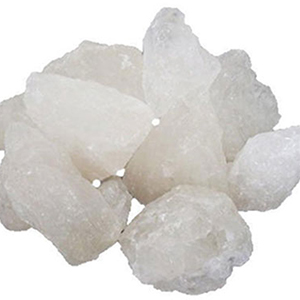
Synonyms:Ammonium Alum, Aluminum Ammonium Sulfate, Aluminium Ammonium Sulphate
CAS Number: Ammonium Alum Dodecahydrate 7784-26-1,
Molecular Weight: 453.33,
Chemical Formula: AlNH4(SO4)2.12H2O,
EINECS EC Number: 232-0555-3, HS Code 283330**,
FEMA: ----,
CAS Number: Ammonium Alum Anhydrous 7784-25-0,
Molecular Weight: 237.15,
Chemical Formula: AlNH4(SO4)2,
EINECS EC Number: 232-0555-3, HS Code 283330**,
Ammonium aluminium sulfate, also known as ammonium alum or just alum, is a white crystalline double sulfate usually encountered as the dodecahydrate.
GHS, Globally Harmonized System Classification in accordance with 29 CFR 1910
Classification according to Regulation (EC) No 1272/2008
Skin corrosion/irritation Category 2
Serious eye damage/eye irritation Category 2A
Specific target organ toxicity, single exposure; Respiratory tract irritation Category 3
Labelling according to GHS and Regulation (EC) No 1272/2008
GHS Label Elements  Irritant |
Inhalation: If inhaled, remove to fresh air. If not breathing, give artificial respiration. If breathing is difficult, give oxygen. Get medical attention.
Ingestion: If swallowed, DO NOT INDUCE VOMITING. Give large quantities of water. Never give anything by mouth to an unconscious person. Get medical attention immediately.
Skin Contact: Wipe off excess material from skin then immediately flush skin with plenty of water for at least 15 minutes. Remove contaminated clothing and shoes. Get medical attention. Wash clothing before reuse. Thoroughly clean shoes before reuse.
Eye Contact: Check for and remove any contact lenses. In case of contact, immediately flush eyes with plenty of water for at least 15 minutes. Cold water may be used. WARM water MUST be used. Get medical attention.
Cover spill with soda ash and mix. Ventilate area of leak or spill. Keep unnecessary and unprotected people away from area of spill. Wear appropriate personal protective equipment. Pick up and place spills in a suitable container for reclamation or disposal, using a method that does not generate dust.
7. Handling and Storage
Keep Ammonium Alum in a tightly closed container, stored in a cool, dry, ventilated area. Protect against physical damage. Isolate from incompatible substances. Containers of material may be hazardous when empty since they retain product residues (dust, solids); observe all warnings and precautions listed for the product.,br>
Environmental Toxicity: No information found.
Products of Biodegradation: Possibly hazardous short term degradation products are not likely. However, long term degradation products may arise. Soluble in water Persistence is unlikely based on information available.
Whatever cannot be saved for recovery or recycling should be managed in an appropriate and approved waste disposal facility. Processing, use or contamination of this product may change the waste management options. State and local disposal regulations may differ from federal disposal regulations. Dispose of Aluminum Ammonium Sulfate or Ammonium Alum container and unused contents in accordance with federal, state and local requirements.
DOT:
Not regulatedUSA:
Chemical Weapons Convention: No; TSCA 12(b): No; CDTA: No
SARA 311/312: Acute: Yes; Chronic: No; Fire: No; Pressure: No
Reactivity: No (Pure / Solid)
WHMIS (Canada): Not controlled under WHMIS (Canada).
EINECS EC Number:232-0555-3
H315: Causes skin irritation.
H319: Causes serious eye irritation.
H335: May cause respiratory irritation.
Xi Irritant
R36/37/38 Irritating to eyes, respiratory system and skin
R43 May cause sensitisation by skin contact
DISCLAIMER:
The information and recommendations set forth herein (hereinafter "Information") are presented in good faith and believed correct as of the date hereof. It is compiled from various sources and it is not necessarily all inclusive nor fully adequate in every circumstance. In addition, these suggestions should not be confused with nor followed in violation of applicable laws, regulations, rules or insurance requirements applicable. This SDS sheet is intended only as a guide to the appropriate precautionary handling of the material by a properly trained person using this product. Individuals receiving the information must exercise their independent judgment in determining its appropriateness for a particular purpose.